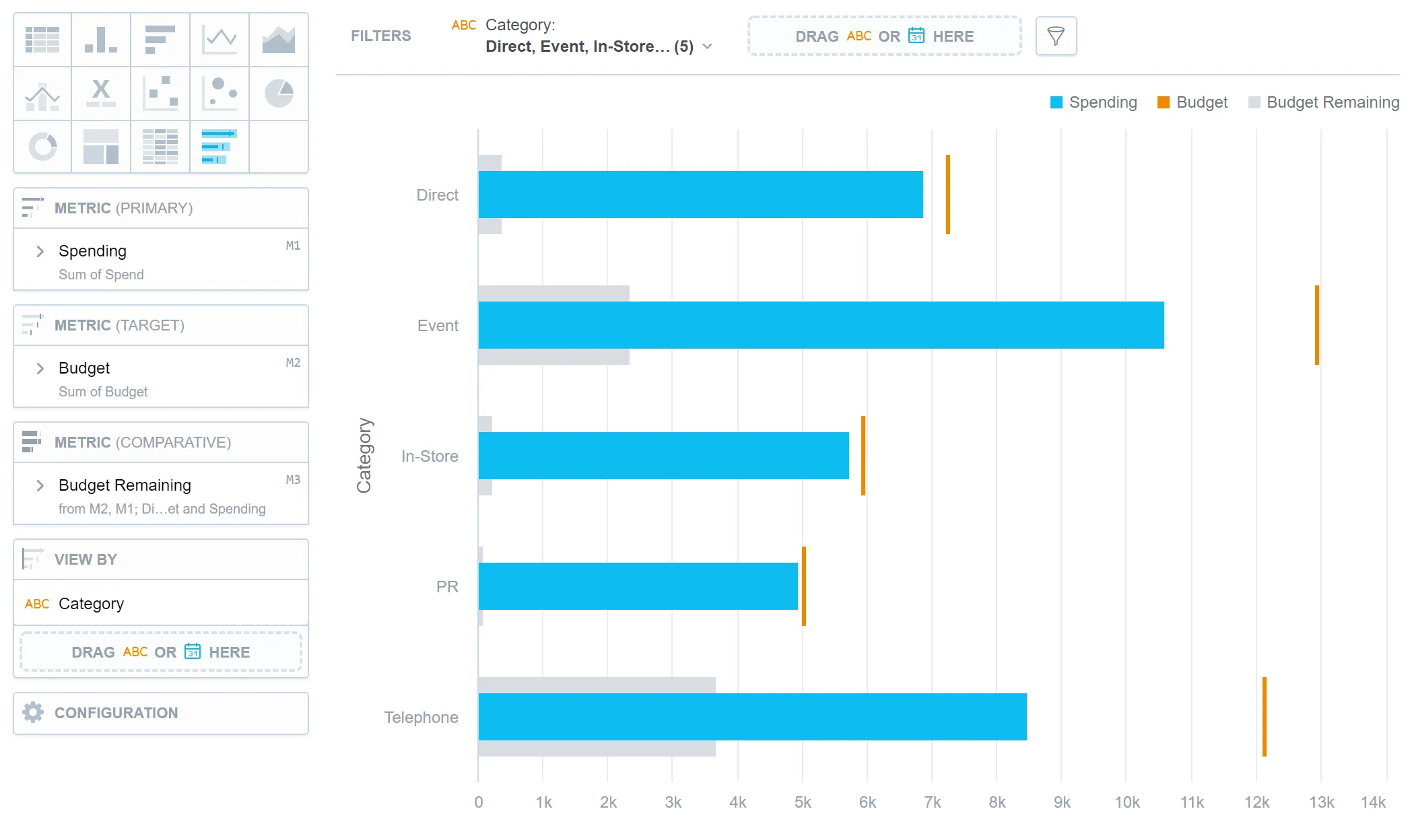Bullet Chart
Bullet charts are used to display a single quantitative measure along with a target or comparison value. They provide a concise and clear representation of performance, progress, or achievement towards a goal. Common uses of bullet charts include tracking key performance indicators (KPIs), comparing actual results with targets, or visualizing project milestones.
For example, a bullet chart can represent sales performance by displaying the actual sales value, the target sales value, and additional indicators such as poor, satisfactory, or excellent ranges. Bullet charts offer a compact and informative way to assess and communicate performance levels.
Bullet charts have the following sections:
- Metric (Primary)
- Metric (Target)
- Metric (Comparative)
- View by
- Configuration
In bullet charts, you can also compare your data to the previous period or the same period of the previous year. For details, see the Time over Time Comparison section.
Limits
| Bucket | Limit |
|---|---|
| Metrics | 20 metrics (to add more than one metric, Stack by bucket must be empty) |
| View by | 1 attribute (this bucket is available only if there is exactly one metric) |
| Feature | Limit | Comment |
|---|---|---|
| Maximum data points in one chart | 3,000 | This is a display (visualization) limit. If you exceed this limit and want to see all data, change the visualization type to Table. |
